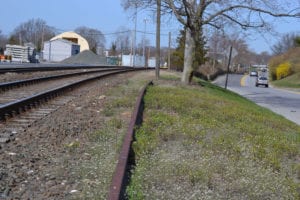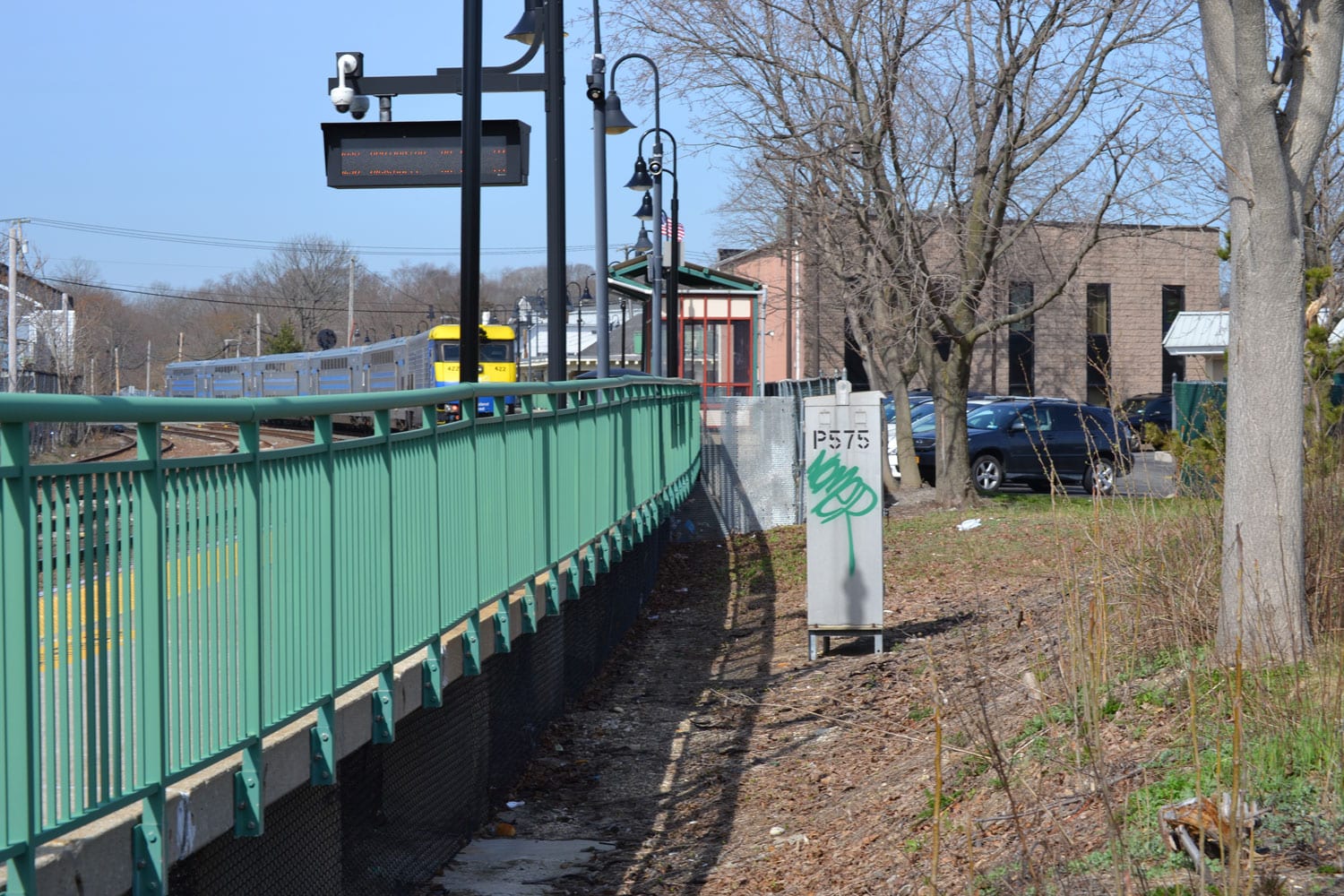By Alex Petroski
Cleaning up is hard to do.
Port Jefferson Village is entrenched in a beautification project that spans large sections of the area, including several efforts in the vicinity of the Port Jefferson Long Island Rail Road station located in between Main Street and Highlands Boulevard. Two years ago, according to village resident Kathleen Riley and Village Mayor Margot Garant, the village requested that LIRR property be cleared of dead trees along the train tracks on the south side of Highlands Boulevard in the hopes of improving aesthetics in the area.

“When this beautification effort started there were a number of dead trees along the said property, and when the LIRR was requested to remove the dead trees, workmen cut down all the trees, dead and alive for a considerably large portion of the property,” Riley said in an email. “When investigated with survey records, it happens that the LIRR cut down trees on Port Jefferson Village property, truly a violation that calls for compensation. Mayor Garant has yet to receive any compensation from the LIRR for the past two years. To her credit she continues to pursue beautification.”
Riley shared a letter she received in early April from Susan McGowan, the MTA’s general manager of public affairs for the LIRR as a response to several letters she sent to New York Gov. Andrew Cuomo (D), state Sen. Ken LaValle (R-Port Jefferson), Assemblyman Steve Englebright (D-Setauket) and to Ed Dumas, the vice president of market development and public affairs for the LIRR, since the trees were first removed. McGowan addressed the findings of the survey that the trees were on village property.
“In light of these findings, we will work with the village to address the concerns you raised, and the LIRR will continue to coordinate with the village as our station enhancement project for Port Jefferson Station moves forward,” McGowan said.
Aaron Donovan, MTA deputy director for external communications for the LIRR responded to requests for comment from Dumas on the matter in an emailed statement.
“I’m just going to get the job done; then I’m going to the railroad and ask for restitution — I can’t wait any longer.”
— Margot Garant
“We have received and reviewed all of the correspondence, and we are evaluating what we can do to improve the Highlands Boulevard area,” he said. The village and LIRR officials have met several times in recent months to discuss beautification of the station and the areas near the train tracks.
Since the removal of the trees, the village has obtained grant money to improve parking for the train station in lots on both sides of Main Street, in addition to funds garnered for business improvement projects just steps away from the train station.
“We’re seeking some sort of cooperation from the railroad,” Garant said in a phone interview. “We’ve been dealing with this and other issues for well over two years.”
Garant said the village now plans to plant six-foot tall Leyland cypress trees along the fence line on Highlands Boulevard overlooking the train tracks using unencumbered monies and will then ask the LIRR for restitution.
“I’m just going to get the job done; then I’m going to the railroad and ask for restitution — I can’t wait any longer,” she said.
Riley said she met with Caran Markson, village gardener, Garant and some other community members recently to secure plans for the project, which they hope will begin during April. Some of the other issues raised by the village regarding the look of the areas surrounding the tracks include crumbling walls bordering the tracks, rusted railings and insufficient fencing.







